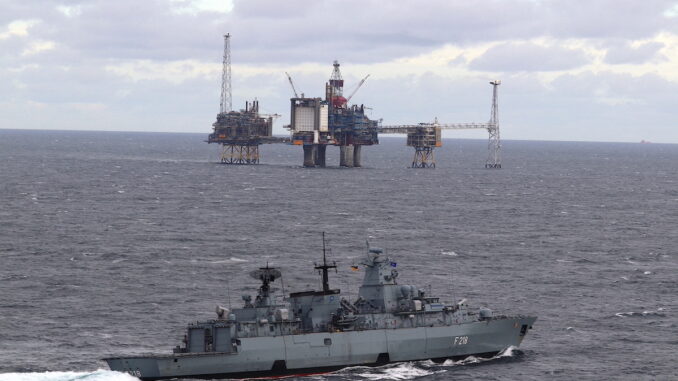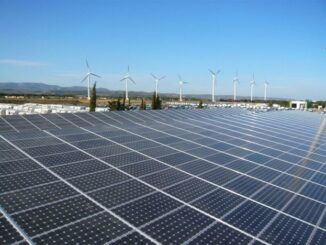
The European Union (EU) has now updated its maritime security strategy in response to the Nord Stream gas pipeline attacks and is calling for more naval patrols, joint exercises, and better coordination between member states. This policy move is a step in the right direction given the EU’s increased reliance on piped Norwegian gas.
The past year has been nothing short of a whirlwind for Europe’s energy landscape. Before the Kremlin’s fateful decision to launch its all-out invasion of Ukraine, Russia enjoyed a dominant position as Europe’s leading gas supplier. In 2021, the EU imported 155bn cubic meters (BCM) of Russian gas, which accounted for about 45% of total gas imports.
However, in the wake of the war, Russia’s role in the EU energy market has collapsed. Due to EU sanctions, Russia’s weaponization of gas supplies, and the unexplained sabotage of the Nord Stream pipelines, Russia delivered only around 60 BCM to the EU in 2022. If the pipeline flows remain at current levels, it is likely that Russia will supply a measly 25 BCM of piped gas to the EU over the course of 2023.
EU countries have pursued a number of strategies to fill the gap. These included measures to cut demand, like energy saving and efficiency initiatives, and the creation of new liquefied natural gas (LNG) import terminals. While the increase in LNG regasification capacity and the growth of LNG imports has received the most attention from the media and pundits alike, it has overshadowed Norway’s quiet rise as the leading gas supplier to the EU.
In 2021, Norway sent 82 BCM of gas to the bloc, accounting for a quarter of its gas needs. This rose to nearly 90 BCM in 2022. By contrast, the United States shipped about 55 BCM of LNG, making it the EU’s second-largest supplier of gas.
Norway’s role is set to grow. The country’s natural gas comes exclusively from offshore fields in the North, Norwegian, and Barents Seas, and there are lots more yet to come. Over the coming years, new gas will likely start to flow from fields close to the Arctic sheet. According to government estimates, the Barents Sea may contain two-thirds of the oil and gas yet to be discovered off its shores.
Once extracted, the gas travels across the most extensive network of subsea pipelines in the world, extending over 8,000km (5,000 miles) in deep and frigid waters. These pipelines connect the fields at sea to processing plants onshore in Norway and to landing points in Germany, Belgium, France, Poland, and the United Kingdom. Only 5% of Norway’s gas is exported in the form of LNG.
The shift from Russian natural gas has strengthened the EU’s energy security by making it less exposed to Kremlin politicking. The loss of the EU gas market will also deplete Moscow’s coffers and limit its capacity to wage war.
However, the bloc’s increased reliance on Norway and its subsea gas pipelines might also expose it to new security risks.
Considering the size, remoteness, and significance of Norway’s subsea pipelines, there is a chance that hostile countries or other groups could try to disrupt the gas flows.
Only last month Dutch intelligence authorities warned that vital marine infrastructure could be vulnerable to disruption and that Russia is undertaking “activities that indicate espionage and acts to prepare for disruption and sabotage.” Alarmed by the risks, Europe’s bigger states are responding — the UK has announced it is commissioning two new multirole ocean surveillance ships equipped with unmanned underwater vehicles, while France will invest €300m ($327m) in underwater drones and robots.
But protection is difficult and so is post-attack attribution. Many subsea pipelines lie at depths of hundreds of meters. By contrast, the explosion that severed the Nord Stream gas pipeline took place at a depth of around 80 meters, and the culprit has still not been identified.
Natural gas infrastructure is also vulnerable to cyber threats. These could include attacks against operational technology (OT), which includes the various industrial control systems that enable the functioning of energy infrastructure. Or, alternatively, they could include attacks against the information technology (IT) systems of natural gas companies or operators.
The 2021 ransomware attack on the operators of the Colonial Pipeline in the US serves as a particularly good example of just how disruptive cyber threats against IT systems could be.
The EU’s decision to update its maritime security will have a positive impact on the energy security of the bloc. It is also in line with the recent announcement to create a joint EU-NATO task force on resilience and critical infrastructure protection.
But much more multilateral and regional effort will likely be required to keep critically important subsea gas pipelines safe from harm.
Lukas Trakimavičius is a CEPA 2022 James S. Denton Fellow. He works at the research and lessons learned division of the NATO Energy Security Centre of Excellence. Previously he held positions at NATO and the Lithuanian Ministry of Foreign Affairs.
The views expressed in this article are the author’s own and are made in a purely personal capacity.
Europe’s Edge is CEPA’s online journal covering critical topics on the foreign policy docket across Europe and North America. All opinions are those of the author and do not necessarily represent the position or views of the institutions they represent or the Center for European Policy Analysis.



